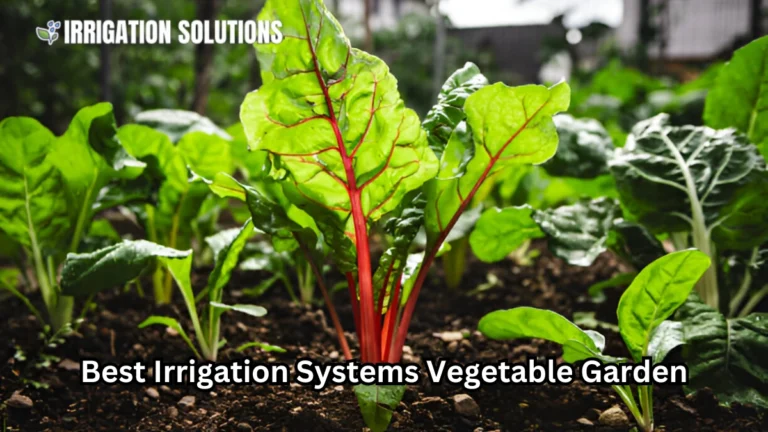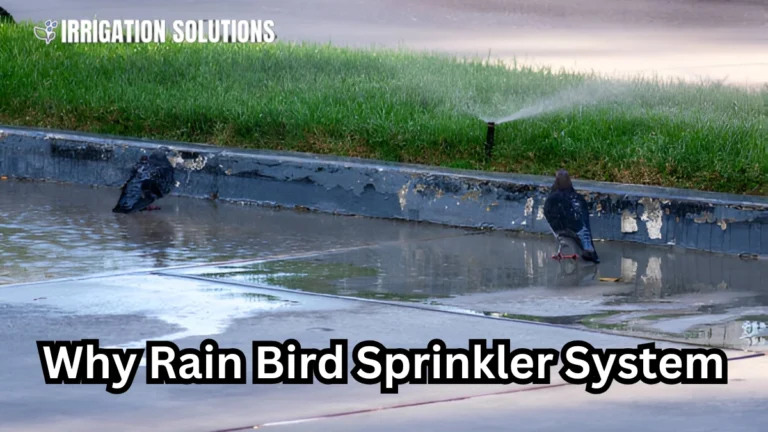Top irrigation systems on farms

Irrigation is a critical component of modern farming, especially in areas where rainfall is inconsistent or unreliable. With increasing challenges due to climate change and population growth, ensuring that crops receive a consistent and adequate water supply has never been more essential. In this blog post, we will explore the different types of irrigation systems used on farms, the benefits they provide, and the latest innovations in water management for agriculture.
Why Irrigation Systems Matter for Farms
The Role of Water in Agriculture
Water is one of the most important resources for agriculture. Plants require water for photosynthesis, nutrient transport, and overall growth. Without adequate water, crops fail to reach their full potential, leading to lower yields. In regions where rainfall isn’t enough or is erratic, irrigation systems are vital for sustaining crops throughout their growing season.
According to the Food and Agriculture Organization (FAO), over 70% of global freshwater is used for agricultural purposes. As the world’s population grows, the demand for food increases, and so does the need for efficient water usage on farms. Farmers who don’t have reliable irrigation may experience crop failures and lower profits, especially during droughts.
Benefits of Irrigation Systems on Farms
- Increased Crop Yields: Irrigation ensures a consistent water supply, which helps crops grow more reliably. Consistent watering leads to better crop development, higher yields, and improved quality.
- Reduced Risk of Crop Failure: Drought or irregular rainfall can devastate crops. By having an irrigation system in place, farmers can mitigate the risks of these environmental uncertainties.
- Optimized Water Use: Irrigation systems can be designed to use water efficiently, preventing waste. Technologies like drip irrigation and sprinkler systems allow farmers to use water exactly where it’s needed, minimizing evaporation and runoff.
- Improved Soil Health: Consistent irrigation helps maintain soil moisture levels, preventing the soil from becoming too dry or compacted. This improves root development and the overall health of the crop.
- Extended Growing Seasons: In some cases, irrigation can help farmers grow crops year-round or extend growing seasons. For example, greenhouse irrigation systems allow farmers to grow crops in areas with extreme weather conditions.
Types of Irrigation Systems Used on Farms
There are several types of irrigation systems, each suited to different farming practices, climates, and crops. Below, we’ll break down the most common systems used on farms today.
Surface Irrigation
Surface irrigation is one of the oldest and most widely used methods. It involves distributing water across the soil by gravity, where it flows across the field and infiltrates the soil.
Advantages:
- Simple to implement, especially in areas with flat terrain
- Low upfront cost
Disadvantages:
- Less efficient, as water may evaporate or runoff
- Not ideal for all types of crops
Best For: Rice paddies, flood irrigation, and certain row crops.
Drip Irrigation
Drip irrigation, often regarded as the most efficient method, delivers water directly to the plant roots through a network of pipes, valves, and emitters.
Advantages:
- Reduces water waste by minimizing evaporation and runoff
- Works well in arid climates where water conservation is critical
- Can be automated, reducing labor costs
Disadvantages:
- Higher initial installation cost
- Maintenance can be more involved to prevent clogging
Best For: Orchards, vineyards, greenhouses, and row crops like tomatoes and peppers.
Sprinkler Irrigation
Sprinkler systems distribute water over the crop field in a way that mimics rainfall. This system uses pumps, pipes, and sprinkler heads to spray water over the crops.
Advantages:
- Highly adaptable to different soil types and crop varieties
- Can cover large areas
Disadvantages:
- Can lead to water wastage due to evaporation, especially in hot climates
- Requires energy for pumping water
Best For: Large fields with crops like corn, wheat, and vegetables.
Center Pivot Irrigation
Center pivot irrigation involves a rotating sprinkler system that moves in a circular pattern across a field. This system is often used for large scale farming.
Advantages:
- Efficient water use with minimal evaporation
- Covers large areas without requiring much manual labor
Disadvantages:
- High initial setup costs
- Not ideal for irregularly shaped fields
Best For: Large-scale farms growing crops like corn, soybeans, and wheat.
Factors to Consider When Choosing an Irrigation System
When selecting the best irrigation system for a farm, several factors come into play:
- Water Availability: The amount and consistency of available water will dictate which irrigation system is most suitable.
- Crop Type: Different crops have varying water needs, so the system should cater to the specific irrigation requirements of the crops being grown.
- Soil Type: The soil’s ability to absorb and retain water affects the efficiency of different irrigation methods.
- Field Size and Shape: Larger or irregularly shaped fields may require a more complex irrigation system like center pivot irrigation.
- Climate and Weather Patterns: In areas with high evaporation rates, drip irrigation or sprinkler systems with proper scheduling can be more effective.
The Latest Innovations in Irrigation Technology
As water resources become scarcer and the need for sustainable farming practices grows, farmers are turning to technology to optimize their irrigation systems. Here are a few cutting edge innovations making waves in the agriculture industry:
Smart Irrigation Systems
Smart irrigation systems use sensors and data analytics to determine the exact water needs of crops. These systems can monitor soil moisture, weather conditions, and other environmental factors to adjust water usage automatically. This minimizes water wastage and ensures that crops receive just the right amount of water at the right time.
Advantages:
- Maximizes water efficiency by adapting to real time conditions
- Reduces labor costs with automation
Popular Systems:
- HydroPoint Smart Irrigation: Known for using weather data and soil sensors to optimize water delivery.
- Netafim Smart Irrigation: A leading provider of precision irrigation systems that combine drip irrigation with smart technology.
Rainwater Harvesting
Rainwater harvesting involves collecting rainwater during the wet season and storing it for use during dry spells. This technique reduces dependence on groundwater or municipal water supplies, making it an eco-friendly and cost effective option for irrigation.
Advantages:
- Reduces water bills and environmental impact
- Provides a sustainable solution for areas with erratic rainfall patterns
Implementation Tips:
- Use gutters and storage tanks to capture rainwater.
- Implement filtration systems to ensure water quality before use.
Variable Rate Irrigation (VRI)
Variable Rate Irrigation (VRI) allows farmers to adjust the water application rate across different parts of their fields based on specific needs. This precision irrigation technology uses GPS and soil moisture data to direct more water to areas that need it most and less to areas that are already sufficiently moist.
Advantages:
- Saves water and reduces costs
- Enhances crop health by providing tailored irrigation
Popular Systems:
- Raven Viper 4+: Offers advanced VRI capabilities to improve irrigation efficiency.
- John Deere VRI: Provides variable irrigation rates to optimize water usage.
Case Studies: Real-Life Examples of Successful Irrigation Systems
Case Study 1: Sustainable Irrigation in California’s Almond Orchards
In California, a region known for its dry climate, almond farmers have adopted drip irrigation systems to conserve water while maximizing yields. By switching from traditional flood irrigation to drip systems, farmers have reduced their water usage by 30-40% and increased crop yields by 15-20%.
Case Study 2: Smart Irrigation in Australia’s Vineyards
In Australia, winegrowers are using smart irrigation technology to conserve water in the country’s arid regions. The adoption of soil moisture sensors and automated irrigation systems has led to a 25% reduction in water usage, while maintaining the quality of the grapes.
Tips for Efficient Irrigation Practices
To get the most out of your irrigation system, consider these best practices:
- Water During Off-Peak Hours: Watering early in the morning or late in the evening reduces evaporation and ensures more water reaches the plants.
- Use Mulch: Mulching around plants helps retain moisture in the soil and reduces the frequency of irrigation.
- Regular Maintenance: Inspect your irrigation system frequently for leaks or clogs to keep it running efficiently.
- Monitor Weather Patterns: Adjust irrigation schedules based on rainfall forecasts and current weather conditions to avoid overwatering.
Conclusion:
As technology advances and the demand for water-efficient farming increases, modern irrigation systems are becoming more sophisticated and essential for the survival of agriculture. With the right irrigation system, farmers can ensure sustainable and profitable crop production even in challenging climates.
Choosing the right system requires careful consideration of several factors, including crop type, field size, water availability, and climate. But by adopting new technologies like smart irrigation and variable rate systems, farmers can drastically improve water efficiency, reduce costs, and optimize crop yields. With the right planning and tools, irrigation systems can help ensure that farms remain productive and resilient in the face of changing environmental conditions.
By integrating innovative practices and using irrigation systems effectively, the future of farming can be both sustainable and profitable for generations to come.






